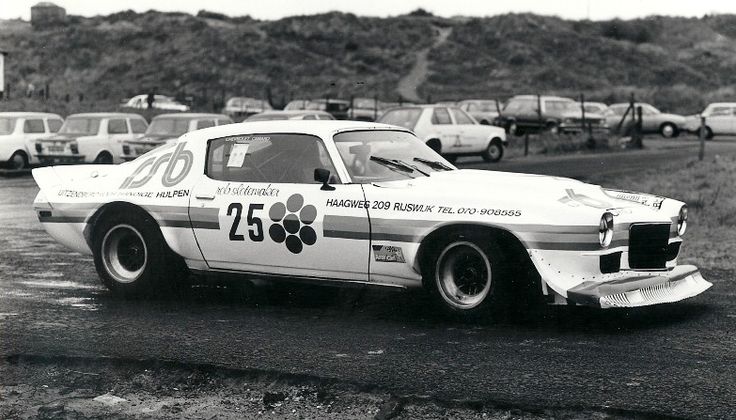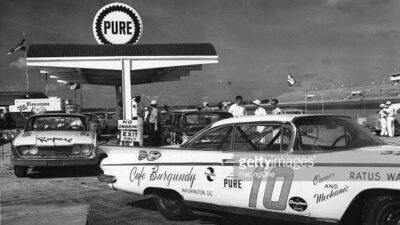Touring car racing stands as one of motorsport’s most enduring and accessible forms of competition, where modified production cars battle wheel-to-wheel on racing circuits around the world. The origins of touring car racing can be traced back to the early 20th century when manufacturers sought to showcase their vehicles’ performance and reliability through races that mimicked real-world driving conditions. Unlike other forms of motorsport that use purpose-built race cars, touring car racing uses vehicles based on everyday cars that people can actually purchase from dealerships.

The sport gained significant momentum in the 1950s when structured championships began to emerge. The inaugural touring car race in Britain took place in 1952, marking a significant milestone that separated touring cars from other racing categories. This distinction allowed for more focused competition and showcased vehicles that were accessible to average consumers.
The golden era of touring car racing from the late 1980s to early 2000s produced some of motorsport’s most intense battles and unforgettable moments. The sport has evolved dramatically over the decades, adapting to technological advances while maintaining its core appeal of close competition between recognizable cars that fans could relate to and potentially own themselves.
Key Takeaways
- Touring car racing began in the early 20th century as manufacturers wanted to prove their production cars’ performance in competitive racing conditions
- The sport reached its peak popularity during the golden era from the late 1980s to early 2000s with iconic championships and legendary drivers
- Modern touring car racing continues to evolve with advanced technology while maintaining its core appeal of accessible, production-based competition
Foundations and Early Development

The foundations of touring car racing emerged in the early 20th century as manufacturers recognized the marketing potential of showcasing production-based vehicles in competitive racing. This period established the fundamental principles and competitive framework that would define the sport for decades to come.
Origins of Touring Car Racing
Touring car racing originated in the early 20th century when automotive manufacturers sought new ways to demonstrate their vehicles’ performance and reliability. The concept differed from other forms of motorsport by emphasizing production-based vehicles rather than purpose-built race cars.
Manufacturers recognized that racing provided an effective platform to showcase engineering capabilities. Early events featured modified versions of standard road cars that maintained close connections to consumer vehicles.
The 1920s marked a crucial period for touring car development. Racing teams began creating distinctively designed cars specifically for competition while preserving the essential characteristics of their road-going counterparts.
These early touring cars emphasized both performance and practicality. The vehicles needed to demonstrate speed on the track while maintaining relevance to everyday driving conditions.
Key Early Events and Milestones
The 1950 introduction of the first official FIA International Championship for manufacturers represented a pivotal moment in touring car racing history. This championship attracted major automotive brands and established a formal competitive structure.
Several landmark events helped establish touring car racing’s reputation:
- Mille Miglia – Demonstrated vehicle durability over long distances
- RAC Tourist Trophy – Showcased versatility across varied driving conditions
- Paris-Rouen race (1894) – One of the earliest organized automotive competitions
The European Touring Car Championship launched in 1963, providing a structured series for manufacturer competition. This championship featured iconic models like the BMW 2002 and Ford Escort RS.
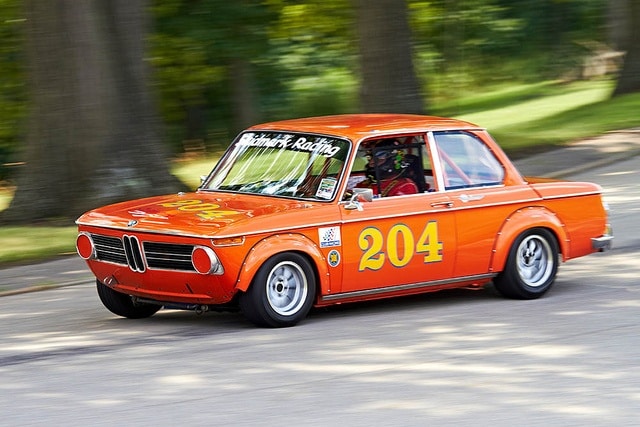
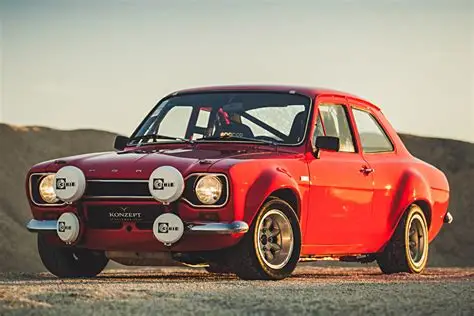
Television coverage during the 1980s and 1990s brought touring car racing to broader audiences. This media exposure significantly increased the sport’s popularity and commercial appeal.
Evolution of Regulations and Rules
Early touring car regulations focused on maintaining connections between race cars and production vehicles. Initial rules required cars to be based on models available to consumers.
Technical regulations evolved throughout the decades to ensure competitive balance. Weight limits and engine specifications became standard requirements for fair competition among different manufacturers.
The introduction of safety regulations marked another significant development. Roll cages, fire suppression systems, and driver protection equipment became mandatory as the sport grew.
Modern regulations balance performance with cost control. Rules now specify detailed technical requirements while preserving the sport’s fundamental principle of production-car relevance.
Regulatory bodies established standardized competition formats to create consistent racing experiences across different championships and regions.
Major International Touring Car Championships

The European Touring Car Championship was established in 1963 as the first major international series for production-based racing cars. The British Touring Car Championship became one of the most successful national series, while various other championships emerged across different continents to showcase close racing between modified street cars.
European Touring Car Championship Overview
The European Touring Car Championship launched in 1963 as touring car racing’s first major international platform. The series initially featured Group A regulations that allowed manufacturers to race modified versions of their production cars.
The championship evolved significantly over the decades. In 2001, the series resumed with FIA support after a period of dormancy. The FIA European Touring Car Championship used Super 2000 rules from 2002, which became dominated by Alfa Romeo and BMW.
The European series gained popularity through intense competition and live broadcasts on Eurosport. These broadcasts brought touring car racing to television audiences across multiple countries.
In 2005, manufacturers requested that the European championship be elevated to world status. The ETCC became the World Touring Car Championship (WTCC) beginning with the 2005 season.
The series continued using Super 2000 and Diesel 2000 regulations. This transition marked a significant milestone in touring car racing’s international development.
British Touring Car Championship Milestones
The British Touring Car Championship emerged as one of the most successful national touring car series. The BTCC attracted both factory teams and independent privateers throughout its history.
Key BTCC achievements:
- Developed into a highly competitive championship by the late 1980s
- Attracted major manufacturer involvement from multiple brands
- Generated significant television coverage and spectator attendance
- Became a model for other national touring car championships
The championship featured close racing between different car manufacturers. Teams competed with modified versions of popular road cars that spectators could relate to and purchase.
The BTCC’s success helped establish touring car racing as a major motorsport category. The series brought together factory teams and privateers, attracting large crowds and major sponsorships.
The championship’s format influenced other national series worldwide. Many countries adopted similar regulations and race formats based on the BTCC model.
Other Notable Series Worldwide
Multiple touring car championships developed across different continents following the European and British examples. These series adapted the touring car concept to local markets and manufacturer preferences.
Notable international series included:
- Deutsche Tourenwagen Meisterschaft (DTM) in Germany
- Superturismo Italiano in Italy
- Australian Touring Car Championship
- Various national championships in Asia and South America
The World Touring Car Championship held events in Argentina, Morocco, Hungary, Germany, Russia, France, Portugal, Slovakia, Czech Republic, Japan, China, Thailand and Qatar. Former races took place in Brazil, Great Britain, Italy, Macau, Netherlands, Spain, Sweden, Turkey and the United States.
These championships featured different technical regulations but maintained the core touring car philosophy. Most series used production-based cars with safety modifications and performance enhancements.
The global spread of touring car racing demonstrated the format’s universal appeal. Different regions developed their own unique characteristics while maintaining the essential touring car racing elements.
Technological Advancements and Car Design

The evolution of touring car racing has been driven by dramatic changes in vehicle construction and engineering principles. Cars transformed from basic production models into sophisticated racing machines through advances in materials, aerodynamic understanding, and specialized manufacturing techniques.
Transition from Road Cars to Racing Models
Early touring cars were simple machines based directly on production vehicles that manufacturers sold to everyday drivers. These basic cars featured standard steel bodies, minimal modifications, and engines designed for street use rather than racing performance.
The 1960s marked a significant shift in car design philosophy. Racing teams began making substantial modifications to improve speed and handling. They stripped unnecessary weight from interiors and added roll cages for safety.
Engine modifications became more sophisticated during this period. Teams installed racing carburetors, modified exhaust systems, and upgraded suspension components. These changes created vehicles that looked similar to road cars but performed dramatically differently.
Key modifications included:
- Stripped interiors to reduce weight
- Racing tires for better grip
- Modified suspension geometry
- Enhanced braking systems
- Safety equipment like roll bars
By the 1980s, touring cars had evolved into purpose-built racing machines. While they maintained visual similarities to production models, the underlying structures were completely redesigned for competition.
The Role of Aerodynamics
Aerodynamic development transformed touring car performance during the 1970s and 1980s. Teams discovered that air flow around the car body significantly affected speed and handling characteristics at racing speeds.
Front spoilers became standard equipment to reduce lift and improve high-speed stability. These additions helped keep the front wheels pressed to the track surface during fast cornering and straight-line acceleration.
Rear wings appeared on many touring cars to generate downforce. This technology borrowed concepts from open-wheel racing and applied them to closed-body vehicles. The added downforce improved cornering speeds dramatically.
Side skirts helped control airflow along the car’s flanks. These extensions created a more aerodynamically efficient shape and reduced turbulence that could affect following cars during close racing.
Aerodynamic elements commonly used:
- Front air dams and spoilers
- Rear wings and spoilers
- Side skirts and extensions
- Underbody panels
- Venting systems for cooling
Wind tunnel testing became essential for competitive teams. This scientific approach replaced guesswork with precise measurements of aerodynamic forces and drag coefficients.
Materials and Engineering Progress
Advanced materials revolutionized touring car construction starting in the 1980s. Teams moved beyond traditional steel construction to incorporate lighter and stronger materials that improved both performance and safety.
Aluminum components reduced vehicle weight while maintaining structural integrity. Body panels, wheels, and engine components made from aluminum alloys provided significant weight savings compared to steel alternatives.
Carbon fiber appeared in high-end touring car programs during the 1990s. This expensive material offered exceptional strength-to-weight ratios but required specialized manufacturing techniques and expertise.
Material progression timeline:
| Era | Primary Materials | Key Benefits |
|---|---|---|
| 1960s-70s | Steel, Cast Iron | Durability, Low Cost |
| 1980s-90s | Steel + Aluminum | Weight Reduction |
| 2000s+ | Aluminum + Carbon Fiber | Maximum Performance |
Safety cage technology advanced significantly during this period. Engineers developed stronger tube structures that better protected drivers during crashes while adding minimal weight to the overall vehicle.
Modern touring cars incorporate sophisticated electronic systems for engine management and data collection. These systems monitor hundreds of parameters in real-time, allowing teams to optimize performance and identify mechanical issues before they cause failures.
Iconic Cars, Manufacturers, and Legendary Drivers

Touring car racing produced remarkable machines like the BMW E30 M3 and Alfa Romeo 155 V6 TI, while manufacturers such as BMW, Mercedes-Benz, and Ford invested heavily in championship victories. Drivers including Roberto Ravaglia, John Cleland, and Bernd Schneider became household names through their fierce rivalries and championship wins.
Memorable Touring Cars in History
The BMW E30 M3 stands as one of the most successful touring cars ever built. Legendary drivers like Roberto Ravaglia, Johnny Cecotto, and Steve Soper achieved countless victories with this machine from the European Touring Car Championship to the demanding Nürburgring Nordschleife.
The Alfa Romeo 155 V6 TI dominated the 1993 DTM season with its high-revving V6 engine and advanced aerodynamics. This Italian machine showcased technical innovation that set new standards for touring car engineering.
Mercedes-Benz’s 190E Evolution models became icons of German engineering excellence. These cars combined raw power with exceptional build quality, creating formidable competitors on European circuits.
Notable touring car achievements:
- BMW E30 M3: Multiple European Touring Car Championships
- Alfa Romeo 155 V6 TI: 1993 DTM Championship dominance
- Ford Sierra Cosworth: British Touring Car Championship success
- Volvo 850 Estate: Memorable 1994 BTCC campaign
Influential Manufacturers
BMW established itself as the dominant force in touring car racing during the 1980s and 1990s. The German manufacturer’s commitment to motorsport development produced championship-winning machines across multiple series.
Mercedes-Benz invested heavily in DTM competition, creating high-performance touring cars that rivaled GT racers in terms of power and sophistication. Their engineering excellence translated directly into race victories.
Ford’s involvement in touring car racing spanned multiple decades and continents. The Sierra Cosworth and later models achieved significant success in the British Touring Car Championship and other international series.
Key manufacturer contributions:
- BMW: E30 M3, technical innovation leadership
- Mercedes-Benz: 190E Evolution, C-Class DTM dominance
- Ford: Sierra Cosworth, global championship success
- Alfa Romeo: 155 V6 TI, Italian engineering excellence
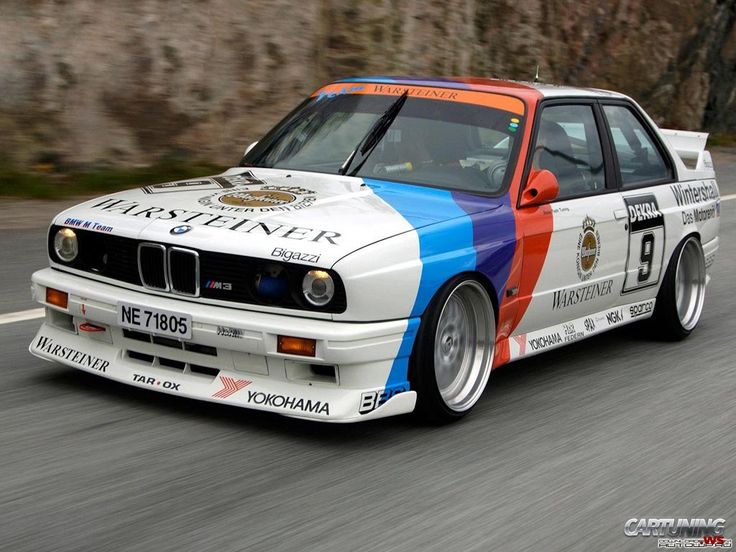
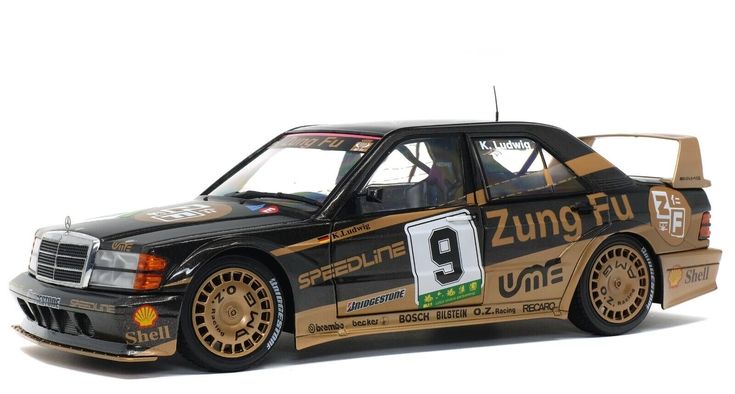
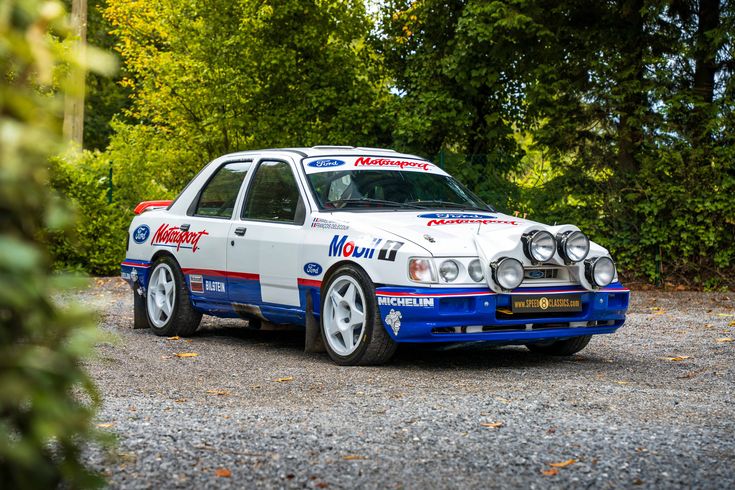
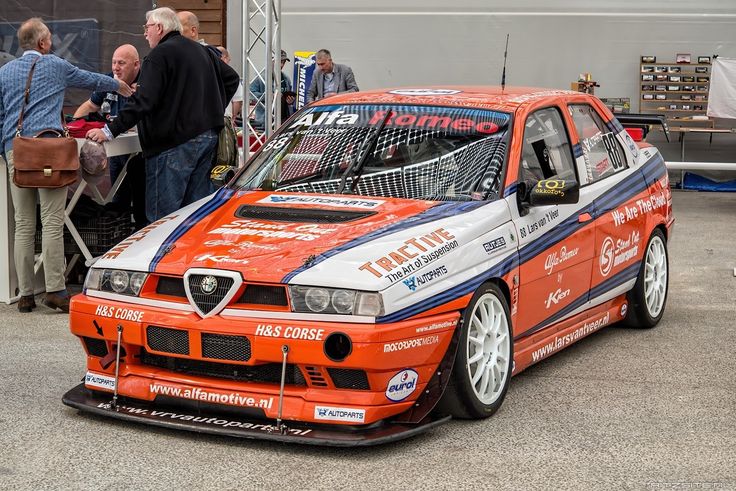
Celebrated Drivers and Personalities
Roberto Ravaglia became synonymous with BMW’s touring car success. The Italian driver’s aggressive driving style and championship victories made him one of the sport’s most recognizable figures.
John Cleland emerged as a British touring car legend through his fierce battles and controversial moments. His 1992 BTCC title fight with Tim Harvey remains one of the most memorable championship battles in touring car history.
Bernd Schneider dominated German touring car racing with five DTM championships. His clinical driving style with Mercedes-Benz established him as one of the greatest touring car drivers ever.
Championship achievements:
- Roberto Ravaglia: Multiple European titles with BMW
- John Cleland: 1989, 1995 BTCC Champion
- Bernd Schneider: Five-time DTM Champion
- Alain Menu: 1997 BTCC Champion with Renault
The Modern Era and Global Impact

The late 1990s and 2000s marked a turning point as touring car racing evolved into a sophisticated global sport. Championships expanded internationally while television coverage transformed fan engagement, creating lasting impacts on motorsport culture worldwide.
Rise of Global Championships
Modern touring car racing transformed from regional competitions into international spectacles during the late 1990s. The World Touring Car Championship (WTCC) launched in 2005, bringing together manufacturers and drivers from multiple continents.
Multiple series now operate across different regions. The British Touring Car Championship remains Europe’s flagship series. Australia’s Supercars Championship attracts global attention with its V8-powered machines.
Major Modern Championships:
- World Touring Car Cup (WTCR)
- British Touring Car Championship (BTCC)
- Australian Supercars Championship
- Deutsche Tourenwagen Masters (DTM)
Global racing championships showcase speed and skill across diverse formats. Each series maintains unique characteristics while sharing common DNA of close competition and manufacturer involvement.
Manufacturers use these platforms to develop new technologies. Hybrid powertrains and advanced aerodynamics filter down from racing to road cars. Teams experiment with data systems and chassis designs that influence broader automotive engineering.
Media Coverage and Fan Culture
Television broadcasting revolutionized touring car racing’s reach during the 1990s and 2000s. Live coverage brought races into homes worldwide, creating dedicated fan bases beyond traditional motorsport audiences.
Digital platforms expanded access further. Streaming services now offer live timing data, onboard cameras, and behind-the-scenes content. Social media connects fans directly with drivers and teams.
Modern Media Elements:
- Live streaming coverage
- Interactive timing systems
- Social media engagement
- Driver documentaries
Fan engagement reaches new levels through technology. Teams offer virtual garage tours and live driver Q&A sessions. Fantasy leagues and prediction games keep audiences involved between race weekends.
Touring car racing maintains its accessibility advantage over Formula 1. Fans can walk through paddocks and meet drivers personally. This connection creates loyal followings that span generations.
Legacy and Continuing Relevance
Modern racing technology and innovation continue shaping automotive development today. Hybrid systems tested in touring cars now appear in consumer vehicles. Safety advances pioneered on track protect road users daily.
The sport’s cultural impact extends beyond technology. Touring car racing proved that production-based vehicles could create exciting competition. This concept influenced other motorsport categories worldwide.
Key Legacy Areas:
- Hybrid technology development
- Safety system advancement
- Aerodynamic improvements
- Driver training methods
Young drivers use touring cars as stepping stones to higher categories. Many Formula 1 champions began their careers in touring car series. The ladder system provides clear progression paths for emerging talent.
The continuing evolution of motorsports reflects broader changes in automotive engineering and entertainment. Electric racing series now complement traditional championships. Touring car racing adapts while maintaining its core appeal of close competition and relatable machinery.
Preservation, Archives, and Historical Research

Several key organizations and individuals have worked to preserve touring car racing history through digital archives and databases. The TouringCars.Net comprehensive touring car database represents one of the most significant modern efforts, while Frank de Jong’s pioneering work laid the foundation for historical touring car research.
Touring Car Data Archives and Resources
Modern digital archives have transformed how touring car racing history is preserved and accessed. TouringCars.Net launched a comprehensive database containing data from over four decades of racing.
The database includes impressive statistics:
- 263 seasons of racing data
- 4,066 races documented
- 3,477 drivers recorded
- 2,438 qualifying sessions cataloged
- Over 30,000 photographs archived
The platform also provides detailed information on 216 individual circuits and venues. This includes graphical representations and historical configurations of each track.
Several organizations support touring car historical research. The Touring Car Archive focuses specifically on documenting touring car racing history worldwide. The International Motor Racing Research Center preserves auto racing history through extensive collections.
Frank de Jong’s Contribution to Historical Records
Frank de Jong made significant contributions to touring car historical research through his work on touringcarracing.net. His website became an invaluable resource for researchers studying the sport’s history.
TouringCars.Net Editor-in-Chief Andrew Abbott acknowledged de Jong’s important work. Abbott regularly cross-referenced de Jong’s historical data when building the modern touring car database. This shows how de Jong’s research continues to influence current preservation efforts.
De Jong’s dedication to documenting touring car racing results from 1952-1993 created a foundation for modern researchers. His meticulous record-keeping helped preserve decades of racing history that might otherwise have been lost.
Frequently Asked Questions

Touring car racing began in the early 20th century as manufacturers showcased modified production vehicles. The sport has evolved through distinct eras with changing regulations, iconic drivers, and technological advances that shaped modern motorsport.
What are the origins of touring car racing?
Touring car racing originated in the early 20th century when motorsport began gaining popularity. Manufacturers wanted to showcase their vehicles’ performance and reliability through races that mimicked real-world driving conditions.
In the 1920s, distinctively designed cars for this new racing form began to emerge. These vehicles were modified versions of standard road cars that emphasized both performance and practicality.
A pivotal moment occurred in 1950 when the first official FIA International Championship for manufacturers was introduced. This championship attracted notable manufacturers and established a competitive framework that emphasized car development.
The European Touring Car Championship launched in 1963, further popularizing the genre. It provided a structured series that allowed various manufacturers to compete head-to-head with iconic models like the BMW 2002 and Ford Escort RS.
How have touring car racing rules and formats evolved over time?
Early touring car regulations focused on modified production vehicles with basic safety requirements. The emphasis was on reliability and durability rather than sophisticated technical specifications.
Technical regulations evolved to include weight limits and engine specifications during the mid-20th century. These rules helped maintain fairness and competitiveness among different manufacturers and models.
Modern touring car series consist of endurance races lasting 3-24 hours. Events start with standard body shells but permit racing equipment like engines, suspension, brakes, wheels, and tires.
Contemporary regulations emphasize cost control and closer competition. Many series now use control components and balance of performance systems to level the playing field between different manufacturers.
Which drivers and teams have been most influential in the history of touring car racing?
Early touring car champions established the sport’s competitive foundation in the 1950s and 1960s. These pioneers proved that production-based racing could deliver exciting entertainment and manufacturer relevance.
The golden era from the late 1980s to early 2000s produced some of the most charismatic drivers and intense battles. This period featured legendary figures who captivated fans across Europe and beyond.
Factory teams from major manufacturers like BMW, Audi, Mercedes-Benz, and Ford invested heavily in touring car programs. These teams developed iconic vehicles and racing strategies that influenced the sport’s direction.
Independent teams and privateer drivers also played crucial roles in touring car history. They often provided competitive alternatives to factory efforts and discovered new talent for the sport.
What are the major touring car racing series and championships around the world?
The World Touring Car Championship represents the highest level of international competition. It features races on circuits worldwide with strict technical regulations and manufacturer participation.
Touring car racing is very popular in Argentina, Brazil, Britain, Germany, Sweden, Norway and Australia. Each region has developed its own championship series with unique characteristics and local manufacturer support.
The British Touring Car Championship stands as one of the most successful national series. It has over 70 years of history and consistently delivers close competition with production-based vehicles.
Regional championships in Europe, Asia, and the Americas provide pathways for drivers and manufacturers. These series often serve as stepping stones to international competition while maintaining local relevance.
How has technology impacted the development of touring car racing?
Early touring cars were simple machines with basic mechanical components that lacked advanced technology. The emphasis was on reliability and durability rather than sophisticated engineering.
The introduction of lightweight materials like aluminum and composites reshaped car design. These materials enhanced aerodynamics and performance while reducing overall vehicle weight.
Electronic fuel injection systems improved engine efficiency and responsiveness during the 1980s and 1990s. Advanced suspension technology also allowed for better handling and cornering capabilities.
Modern touring cars feature sophisticated telemetry systems that provide real-time performance data. This information helps teams make informed decisions during races and optimize their strategies.
What are some of the most memorable moments in touring car racing history?
The establishment of the first FIA International Championship in 1950 marked a defining moment. This event legitimized touring car racing as a serious motorsport discipline with manufacturer backing.
The golden era produced some of the most intense battles and unforgettable cars in motorsport history. These competitions featured wheel-to-wheel racing and dramatic championship battles that captivated audiences.
Iconic race victories at legendary circuits created lasting memories for fans. Close finishes, dramatic crashes, and championship-deciding moments became part of touring car folklore.
The introduction of television coverage during the 1980s and 1990s brought the sport to broader audiences. This exposure increased popularity and helped create some of motorsport’s most memorable television moments.
